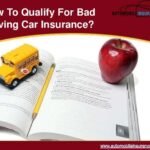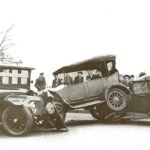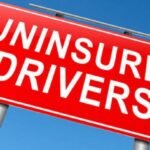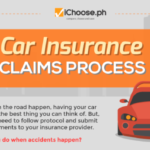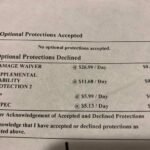Navigating the complexities of car insurance, especially for unique vehicles like vintage cars, requires a nuanced understanding. This guide delves into the specific considerations for insuring classic and antique automobiles, highlighting the differences from standard coverage and the importance of comprehensive protection.
From understanding the factors that influence premiums to exploring various coverage options, this resource aims to empower owners of vintage cars with the knowledge needed to secure appropriate insurance. The unique challenges and considerations inherent in insuring these cherished vehicles are meticulously examined, providing valuable insights and actionable strategies.
Introduction to Vintage Car Insurance
Insuring a vintage car presents unique challenges compared to standard car insurance. These vehicles often have specific restoration requirements, limited production runs, and potentially high values, demanding tailored coverage. Understanding these differences is crucial for protecting your investment.
Unique Challenges in Vintage Car Insurance
- Appraisal Challenges: Accurately assessing the value of a vintage car can be complex, requiring expertise in the specific model, year, and condition. This complexity can impact the amount of coverage offered.
- Limited Parts Availability: Finding replacement parts for older models can be difficult and costly, impacting the cost and availability of repair coverage.
- Specialized Restoration Requirements: Restoration or repair often necessitates specialized expertise and materials, potentially increasing the cost of claims and the need for tailored coverage options.
Factors Differentiating Vintage Car Insurance
- Historical Significance: Vintage cars often hold historical significance, impacting their value and the need for specialized coverage options that address the specific needs of the vehicle.
- Limited Production Runs: Lower production numbers can affect the availability of parts and the expertise needed for repairs, requiring specific coverage options.
- High Value: Vintage cars frequently command high prices, necessitating comprehensive coverage to protect the investment.
Common Misconceptions About Vintage Car Insurance
- Standard Policies Suffice: Standard car insurance policies often do not adequately cover the unique needs of vintage vehicles.
- Value is Automatically Covered: Simply stating the vehicle’s value does not automatically translate to adequate coverage; a comprehensive assessment of the vehicle is necessary.
- Restoration is Always Covered: Coverage for restoration costs might be limited or require specific endorsements.
Importance of Researching Specific Models and Years
Thorough research into the specific model, year, and condition of the vintage car is essential. This research ensures appropriate coverage options are selected to address potential issues.
Standard vs. Vintage Car Insurance Comparison
| Coverage Type | Standard Car Insurance | Vintage Car Insurance |
|---|---|---|
| Liability | Covers damage to other vehicles and injuries to others | Covers damage to other vehicles and injuries to others, potentially with higher limits for vintage vehicles |
| Collision | Covers damage to your vehicle in an accident | Covers damage to your vehicle in an accident, often with specific clauses for vintage car restoration |
| Comprehensive | Covers damage from non-collision incidents (e.g., vandalism, theft) | Covers damage from non-collision incidents, with potential for higher premiums based on the vehicle’s value |
| Premium | Typically lower | Typically higher, depending on the vehicle’s value, condition, and restoration requirements |
| Exclusions | Standard exclusions, like wear and tear | Potentially more exclusions related to modifications or non-standard parts |
Types of Coverage for Vintage Cars
Specific coverage options are essential for protecting vintage cars, which often require specialized policies to address their unique characteristics.
Various Coverage Options
- Liability Coverage: Protects against legal responsibility for accidents involving your vehicle.
- Collision Coverage: Covers damage to your vehicle in a collision.
- Comprehensive Coverage: Covers damage from events other than collisions (e.g., theft, vandalism, fire).
- Uninsured/Underinsured Motorist Coverage: Protects against accidents caused by drivers without sufficient insurance.
Comprehensive Coverage for Classic Vehicles
Comprehensive coverage is vital for protecting vintage cars against various risks, including vandalism, theft, and weather damage, which can significantly impact the vehicle’s value.
Collision Coverage Specific to Vintage Cars
Collision coverage must address potential challenges in restoring or repairing vintage cars, considering the availability of parts and expertise.
Liability Coverage for Vintage Vehicles
Liability coverage is essential to protect against financial responsibility in accidents involving your vintage vehicle.
Comparing Different Levels of Coverage
Different levels of coverage cater to various needs and budgets, with higher premiums associated with broader coverage and higher limits.
Table of Coverage Options
| Coverage Option | Benefits | Potential Drawbacks |
|---|---|---|
| Basic Liability | Protects against financial responsibility in accidents | Limited protection against damage to your vehicle |
| Comprehensive & Collision | Full protection against most damage scenarios | Potentially higher premiums |
| Restoration Coverage | Covers costs associated with restoring the vehicle to its original condition | Requires careful review of policy details and exclusions |
Factors Influencing Vintage Car Insurance Premiums
Several factors significantly impact the cost of vintage car insurance. These factors range from the vehicle’s age and condition to its historical significance and the driver’s record.
Impact of Vehicle’s Age, Model, and Condition
The vehicle’s age, model, and condition significantly affect the premium, as older, rarer, or more fragile vehicles often command higher premiums.
Vehicle’s Historical Significance and Value
The historical significance and market value of the vehicle directly influence the premium, as a higher value demands more comprehensive coverage.
Restoration and Modifications
Restoration and modifications to the vehicle can impact the premium, as they affect the vehicle’s value and the complexity of repairs.
Driver’s Experience and History

Source: finance4.net
The driver’s experience and driving history directly impact the premium, as a safer driver history usually leads to lower premiums.
Table of Factors Affecting Premium Costs
| Factor | Potential Influence on Coverage Limits |
|---|---|
| Vehicle Age | Older vehicles may have lower coverage limits or higher premiums |
| Vehicle Model/Rarity | Rare models may have higher premiums or specialized coverage |
| Vehicle Condition | Poor condition may lead to lower coverage limits or higher premiums |
| Vehicle Value | Higher value vehicles require higher coverage limits |
| Driver Experience | Experienced drivers often have lower premiums |
